Gold and Understanding the Current Investment Reality / Commodities / Gold & Silver 2020
Gold has been misunderstood and ignored by retail investors, financial advisors and pension managers as a critical portfolio asset during normal market conditions. However, during periods of market stress, such as we are experiencing now, gold becomes a safe haven asset that will mitigate losses in the portfolio. For a number of years, many experts have been warning about overinflated markets that were just waiting for a spark to ignite the entire system.
I warned investors that we were in a triplebubble in stocks, bonds and real estate that was created by central bankpolicies. Although I concluded that a market crash was inevitable, I didn’tforesee that the spark to ignite all three bubbles would be the Coronavirus.While the virus itself is life threatening and will result in large demographicchanges across the globe, the economic implications may be worse than thedisease. Major economies in Europe, Canada and the United States have been shutdown. Every industry—airlines, hotels, manufacturing, entertainment, sports,schools and retail—is in lockdown. Mostof the western world is ravaged by fear, isolation, loss of employment, loss ofincome and the psychological effect of this massive lockdown situation. Employeeshave either been terminated or laid off indefinitely. The scale of thisunemployment crunch and financial crisis is beyond the reach of governments’assistance. Many businesses will not be able to reopen once the health issueshave been controlled.
When the health crisis subsides, the economiceffects will last for years; we may, in fact, never recover.
While there is a great deal of uncertaintybecause of the Coronavirus, there are two things that we know for sure. Many industry sectors have no revenue, andgovernments will print enormous amounts of money in an attempt to mitigate thefinancial crisis. Most companies with no earnings will see enormous declines inshare prices. Bonds, particularly corporate bonds, will default and becomeworthless. Even real estate is likely to suffer dramatic declines as bothcommercial and residential tenants are likely to default on rent payments. Thisin turn will result in mortgage defaults at every level, and properties will besold at fire sale prices. These conditions create a perfect storm for an increasinggold price.
Stock markets around the world have sufferedthe worst first quarter in history. Every sector, other than gold, has suffered losses from 12% to 50%.
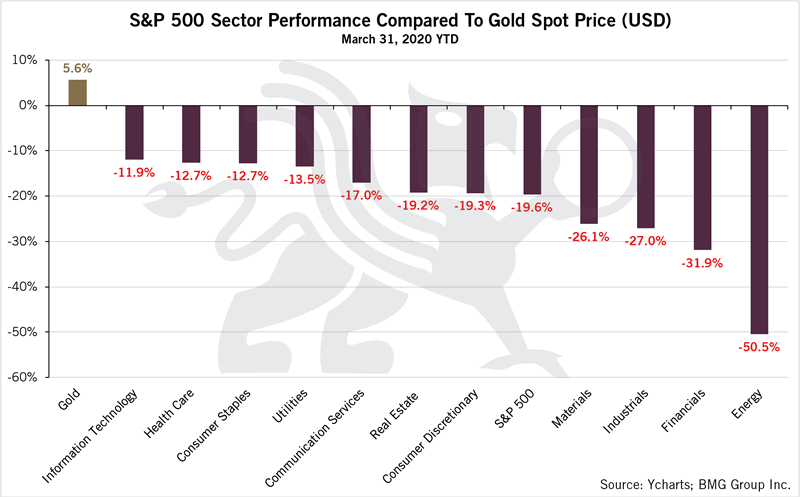
These declines will be particularly hard on individual retirement portfolios, as well as pension funds. The baby boomer’s dreams of retirement are quickly evaporating. I wrote about the coming pension problem in September 2019. Even the largest pension funds, which have more diversified portfolios due to their real estate holdings as well as stocks and bonds, will experience dramatic increases in unfunded liabilities. Most smaller pension funds that only hold stocks and bonds will be devastated. Even before the Coronavirus implication, many municipal pension funds in California had already sent notices to retirees informing them that their future pension cheques would be reduced by 50%. Riots had already started in France and Chile.
For North American public companies, theincreases in unfunded pension liabilities will negatively impact balancesheets, and the unfunded liabilities will have to be amortized over five years,thereby reducing corporate profits at a time when they may be non-existent dueto the Coronavirus lockdown. This will put additional downward pressure onstock prices at a time when they are experiencing ongoing declines.
For current retirees, there is the doublewhammy of declining pension assets together with unemployed workers no longercontributing to the pension funds. The reduction in monthly payments isinevitable, and so are the lawsuits that will follow.
Most pension funds and individual retirementportfolios consist of only financial assets – stocks and bonds. These havealready suffered significant declines; REITs and oil have been hard hit, too.
Even bank stocks, which are considered safe forconservative investors, have suffered significant declines.
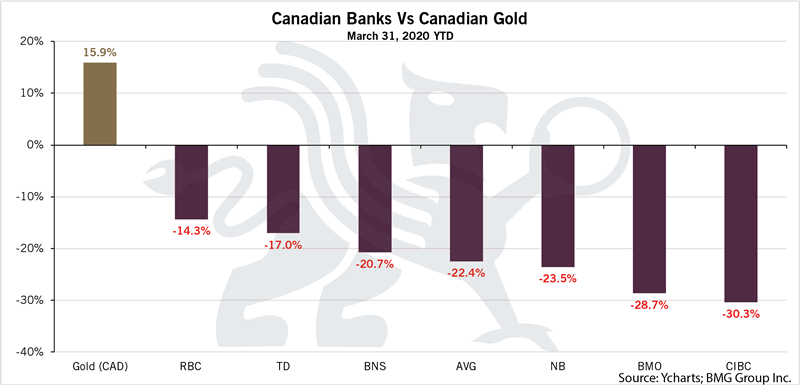
It is critical to note that there is norecovery in sight, and corporate earnings will be non-existent for theforeseeable future. Many experts believe this crash will be worse than that of1929, and that we have just experienced the first phase.
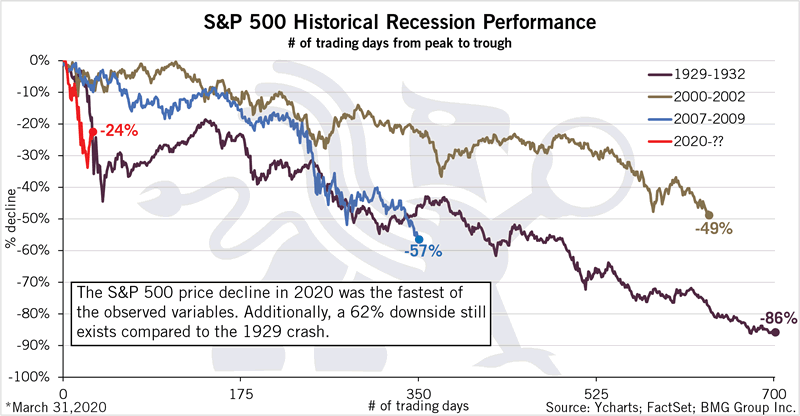
The only asset class that will do well in theforeseeable future is precious metals, particularly gold.
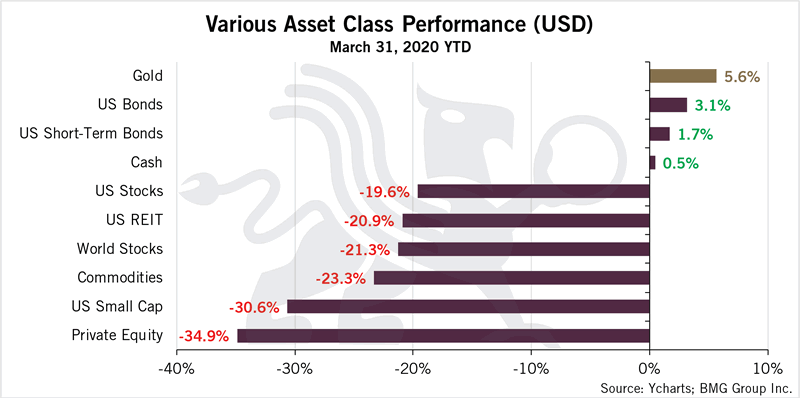
While there have been years of losses,particularly in 2013, gold has risen in all currencies since 2000 (see chart),and many investors are surprised by its steady performance. If you’d purchasedgold in 2000 at $350, it’s now worth around $1,700, which gives you an averagecompounded return of about 9%. Most pension funds have target performancerequirements of 6% yet have totally ignored gold in their portfolios. From itslow in 2018 gold’s performance has dramatically improved. In 2019, the averageincrease was 17.8%. The YTD average for 2020 is 15.8% in the first quarteralone. This should annualize at about 63% per annum. Since the US dollar isoften used as a safe haven by citizens all over the world, the gold performancein US dollars has been the lowest at 5.6% in Q1 2020. In Canadian dollars, goldis up 15.9% YTD.
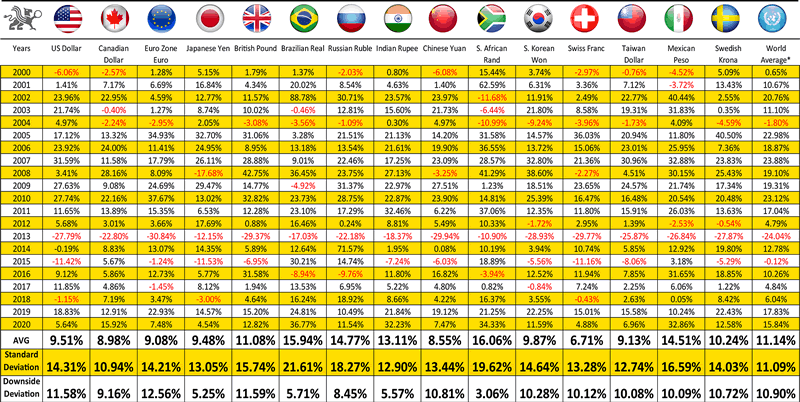
When compared to stocks, we can see that goldhas performed extremely well against all major stock exchanges.
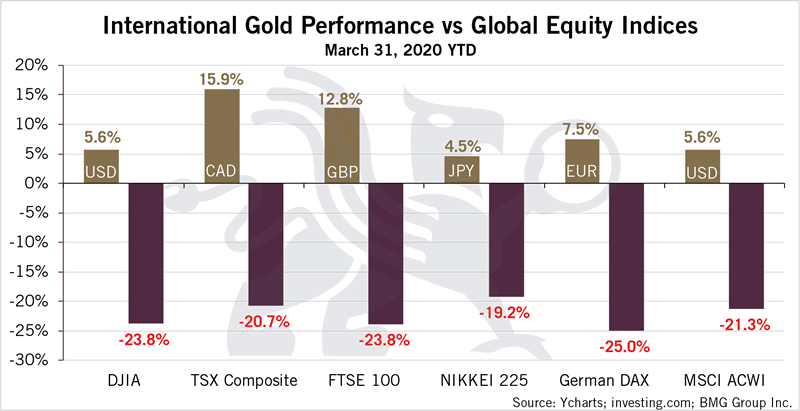
Today, the mainstream media is misleadinginvestors by encouraging them to stay invested for the long term. While it is agood strategy not to trade in and out during a bull market, it is completelymisguided in today’s environment. The market is poised to fall much farther,and it makes no sense to stay invested in financial assets and sustain furtherlosses. This chart shows how long it has taken to break even after majordeclines.

What many investors don’t realize is that if aportfolio declines by 50%, it would have to increase by 100% just to breakeven.
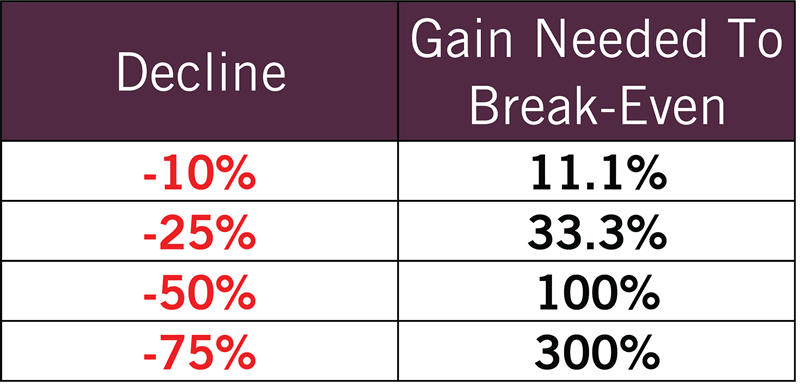
Most baby boomers will simply not live longenough to break even after this market crash. Investors would be better offswitching to cash, and then reinvesting at close to the bottom. What is thepoint of staying invested in order to get dividends of 3-4%, while riskingcapital losses of 50-70%? Better still would be switching to gold, experiencingsignificant gains and then redeploying the gains to a diversified portfolio ofstocks, bonds, REITs, gold and silver when the market has finished correcting.Gold will rise dramatically while everything else will sustain massive losses,as in every market decline.
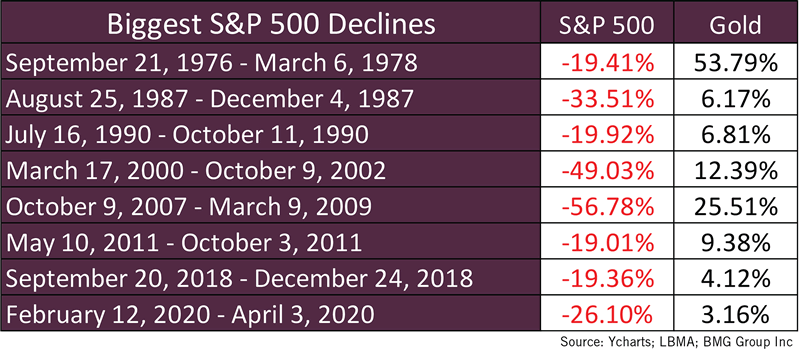
BMG has spent three years analyzing thisapproach, and it has established a hedge fund to implement this strategy foraccredited investors and institutions. BMG’s back-tested model for implementingthis policy during the 2008 crash would have yielded returns of over 20% perannum.
Over the past few years, many retail investorswere forced into selling their bullion holdings by their advisor’s compliancedepartment because their stated risk tolerance in their KYCs didn’t match themandatory risk rating of their portfolio investments based on standarddeviation. Many were persuaded by their advisors to sell their bullion holdingsand purchase equities—particularly Balanced Funds. This chart clearly shows howbad this advice has been.
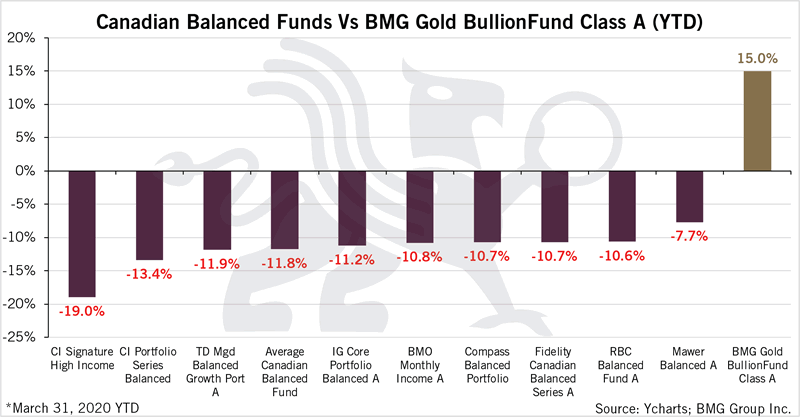
The only way investors could avoid these forcedlosses would be to open a discount brokerage account and make their owninvesting decisions by purchasing Class D units in a BMG Fund. Not only would this reduce fees, butinvestors could allocate their portfolio as they saw fit and not be impeded bythe rules imposed by the advisor’s compliance department. I have written abouthow these regulations were misleadinginvestors.
To summarize: Under the current conditions, do you believe that now is not the time to stay invested? Would it be prudent to take whatever losses you have incurred and move to cash to preserve what you have left? Maybe it is time to become educated on the subject of gold by reading everything you can. When comfortable with what you have learned, do you think that a 20% allocation or more to gold makes sense? Here are some educational resources to help you start on your gold journey, the BullionBuzz, will keep you informed, and my book, $10,000 Gold—Why Gold’s Inevitable Rise Is The Investor’s Safe Haven, will give you a complete background.
By Nick Barisheff
Nick Barisheff is the founder, president and CEO of Bullion Management Group Inc., a company dedicated to providing investors with a secure, cost-effective, transparent way to purchase and hold physical bullion. BMG is an Associate Member of the London Bullion Market Association (LBMA).
Widely recognized as international bullion expert, Nick has written numerous articles on bullion and current market trends, which have been published on various news and business websites. Nick has appeared on BNN, CBC, CNBC and Sun Media, and has been interviewed for countless articles by leading business publications across North America, Europe and Asia. His first book $10,000 Gold: Why Gold’s Inevitable Rise is the Investors Safe Haven, was published in the spring of 2013. Every investor who seeks the safety of sound money will benefit from Nick’s insights into the portfolio-preserving power of gold. www.bmgbullion.com
© 2020 Copyright Nick Barisheff - All Rights Reserved Disclaimer: The above is a matter of opinion provided for general information purposes only and is not intended as investment advice. Information and analysis above are derived from sources and utilising methods believed to be reliable, but we cannot accept responsibility for any losses you may incur as a result of this analysis. Individuals should consult with their personal financial advisors.
© 2005-2019 http://www.MarketOracle.co.uk - The Market Oracle is a FREE Daily Financial Markets Analysis & Forecasting online publication.
